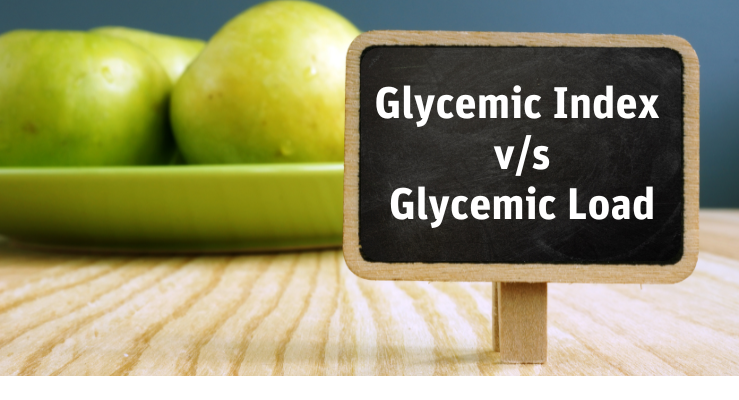
Difference between Glycemic Index and Glycemic Load
Share
All calories consumed by the body are not processed in the same way. The quantity and quality of the carbohydrates affect the insulin release. Insulin is a hormone released by the pancreas that helps carry the glucose from the blood to the body cells.
The amount of insulin released affects the blood sugar levels of the body. It is crucial to keep track of blood sugar levels, especially for people suffering from diabetes. They can keep track of the same by keeping the Glycemic Index (GI) and Glycemic Load (GL) in check.
What is the Glycemic Index (GI)?
Every time we consume something; it has a certain effect on our blood sugar level. The blood sugar level rises after we consume food that has carbohydrates. But different food affects the blood sugar level differently.
This is a function of the type and quantity of carbohydrates as well as the presence of other substances like soluble fiber, fat, and protein.
The Glycemic Index or GI of a food compares the rise in blood sugar level after you eat that particular food. It is ranked from 0-100 where a higher number denotes higher GI and vice versa.
A High GI indicates how rapidly a carbohydrate is turned into sugar and hence will show a higher spike in blood sugar level when the food is consumed.
The lower a food's glycemic index, the slower the blood sugar will rise after eating that food.
The more processed a food is, the higher its GI will be. Moreover, the higher a food's fiber and fat content is, the lower will be its GI.
A low glycemic index diet helps improve the following:
- Type 2 Diabetes
- Obesity
- Gestational Diabetes
Glycemic Index Levels
- Low GI: When the food has less than 55 GI. Examples of food with low GI include soy products, beans, milk, pasta, etc.
- Medium GI: Food with GI ranking between 55 and 70. Examples include orange juice, honey, basmati rice, whole wheat, bread, etc.
- High GI: When the food has a GI exceeding 70. Food like potatoes and white bread fall into this category.
What is Glycemic Load (GL)?
While the glycemic index of the food helps understand how quickly the food is dissolved into sugar, it is not the most accurate measure of the food's effect on your blood sugar level.
You need to know how quickly the food makes sugar enter the bloodstream and how much sugar per serving it can deliver to understand its complete impact on the blood sugar level.
That is where the Glycemic Load (GL) comes in. It is much more accurate to understand the impact of consuming carbohydrates as it accounts for carbohydrates in a serving.
People suffering from diabetes need to pay attention to both GI as well as Gl to understand the food's actual impact on the blood sugar level and to avoid sudden spikes.
The main difference between gi and gl is that the glycemic load is since when you consume high-GI food in small quantities, it has the same impact as consuming low-GI food in larger quantities.
For eg., a watermelon has a GI of 72 but a GL of around 5. So despite having a high GI, it doesn't have that high an impact on blood sugar due to its low GL.
Glycemic Load Levels
- Low GL: Any food that has a GL of less than 10; food like barley bread, milk, apple, watermelon, etc falls under low GL. You can read more about Fruits with Low GL here. You can consume food with low GL for weight loss.
- Medium GL: GL that lies between 11 and 19 falls under this category; Dried Dates, White and brown rice, quinoa, etc are examples of food with medium GL.
- High GL: Foods with a GL of 20 or more are considered to have High GL; Yam, macaroni, and boiled spaghetti all fall in this category.
Conclusion
The glycemic index conveys the effect of that food on the body's blood sugar level. Different types of food have different effects on blood sugar levels and it is vital to keep track of the same, especially for people suffering from diabetes.
While GI gives an insight into the food's impact on the blood sugar level, it is not the most accurate measure of the same. Along with the impact of food on blood sugar levels, it is important to also keep track of how much of that sugar is being consumed per serving.
Glycemic load is what helps keep a check on the same and hence is a more accurate measure of the impact of food on your blood sugar level.
Following a diet that is low in glycemic is crucial for diabetic patients. However, maintaining a healthy weight is much more beneficial not just for your blood sugar but also for your overall health and well-being.
